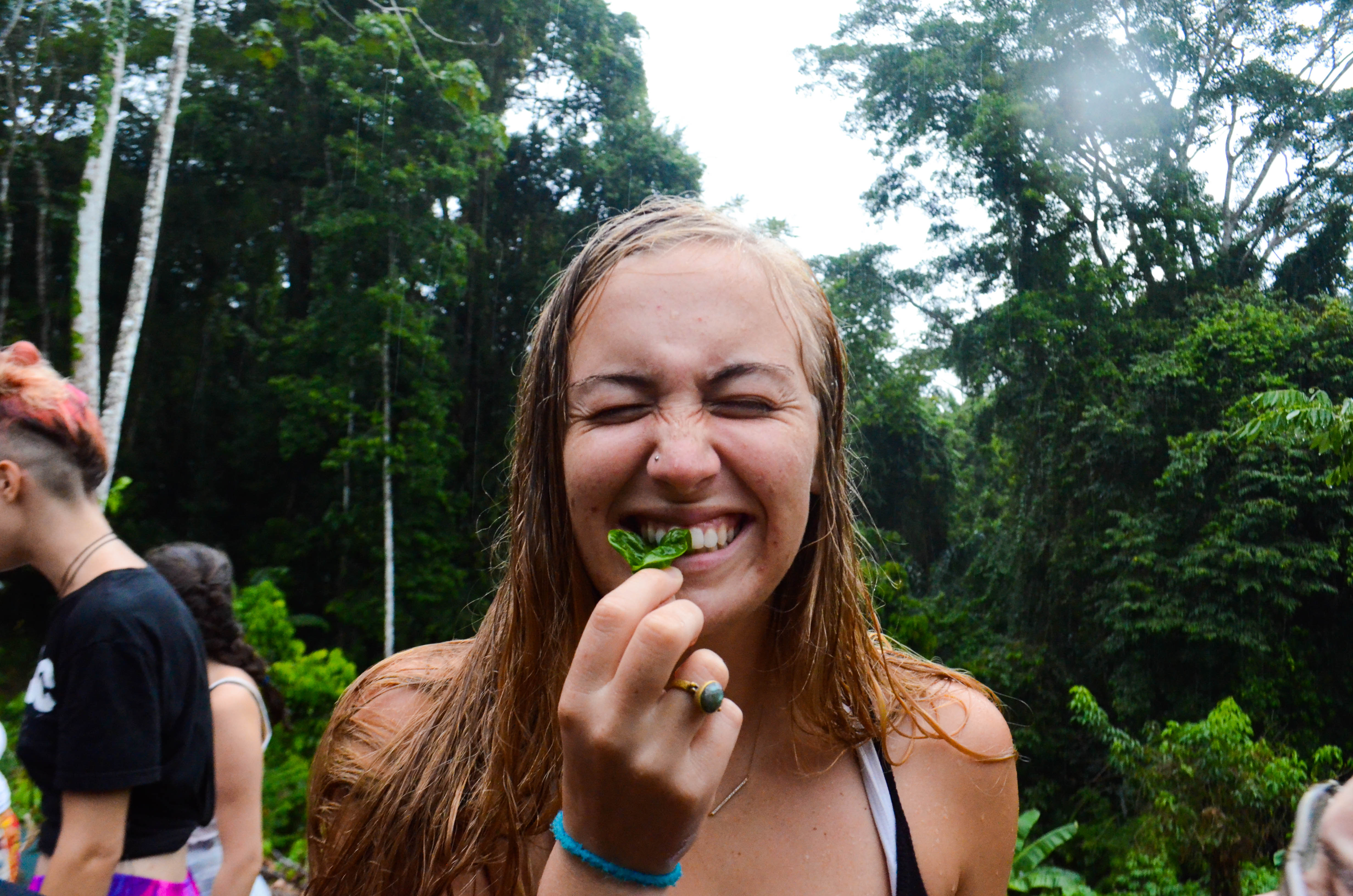Sustainable Living in Costa Rica at Finca Tierra
Sustainable Living in Costa Rica at Finca Tierra
Deep into the jungle of Costa Rica outside of the city of Puerto Viejo, on can find the Finca Tierra acroecological farm. Here, Ian Macaulay and Ana Gaspar Aguerri live fully off of the land with their two year-old son and introduce students from around the world to sustainable living and farming. In early October, my class was able to venture out to the farm and learn about a fascinating way of living with the land.
Finca Tierra’s Beginnings
Ana used to work in the Costa Rican government as a legal consultant, but after living with indigenous communities, being inspired by their way of life, and needing an escape from the world of politics, she set out to explore sustainable living. Ian is an artist from Ohio that became inspired in Puerto Viejo, and also had a serious interest in sustainable living. The two met, and since 2006 have been building their farm and home at Finca Tierra.
About Permaculture
The word permaculture stands for permanent agriculture, but more specifically it stands for the system of agricultural and social design principles centered around simulating or directly utilizing the patterns and features observed in natural ecosystems. Basically, working with the land to implement sustainable practices.
Offered Courses
The Finca Tierra website says that they “offer educational programs that promote self-reliant sustainability through the instruction, demonstration and practice of permaculture (permanent agriculture) principles in Central America.” At Finca Tierra, you can earn your Permaculture Design Certificate, intern and delve into permaculture, or take an edible landscape tour of the farm and enjoy a farm-to-table dinner.
The Sustainable Practices at Finca Tierra
Electricity
The farm gets all of the electricity it needs from solar panels. When originally getting an estimate for solar panels, Ian and Ana were given an estimate nearing $16,000 to power a full home. This was out of reach for them, so they reassessed what they needed electricity for and how to decrease their needs. The two main things they considered were heat for water and refrigeration. The solution to the heat was found in compost. Compost can reach temperatures around 150 degrees Fahrenheit, so they run their water pipes through compost and receive hot water for long periods of time.
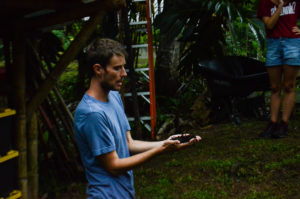
Here, Ian shows our group compost made in the bins below. They put food scraps and other materials in the bin and let their compost worms go to town. The bottom bin has completed compost, and they stack new bins of material on top so that the worms will move out of the finished compost.
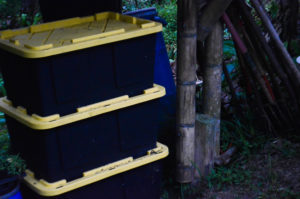
As for refrigeration, they turned to methods used by European cheese and beer makers. From these craftsmen, they learned that large chest freezers as shown below utilized with lower temperatures require significantly less electricity.
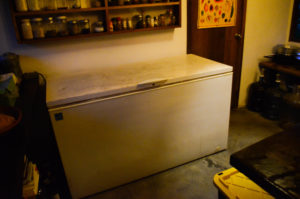
With these solutions in place, Ian and Ana were able to install solar panels to cater to their needs for only $2,000 – $2,500. These panels will last a long time and allow them to use electricity in an environmentally conscious way.
Water
Considering the farm is located in a rainforest, water is not too hard to come by for Finca Tierra. They collect water run-off in a 5000 liter tank that supplies water to the entirety of the farm: the kitchen, bathrooms, crops, etc.
Waste
The farm has true toilets, as opposed to holes in the ground or dry toilets, so they have to deal with waste. The farm uses a biodigester, which is a large, tank-like structure that allows for the breakdown of biodegradable materials by organisms in an anaerobic, or oxygen-free environment. Some groups use a biodigestor or similar implements to produce cooking gas, but Finca Tierra employs it solely for waste management.
To further facilitate bacteria production in the biodigester, Ian and Ana replace the plastic within it with biochar. Biochar is biomass – such as wood, nut shells or animal manures – that has been reduced to carbon and minerals by burning it in a low oxygen environment. In other words, it’s charcoal. When used in farming (or in your garden) it’s called biochar. They create their biochar in a pit like this, and its greater surface area improves the function of their biodigester.
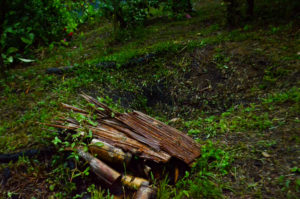
Building Construction
The first building on Finca Tierra’s land was Ana and Ian’s house. They used materials from the area and only spent $16,000 – $20,000 on the house’s construction.
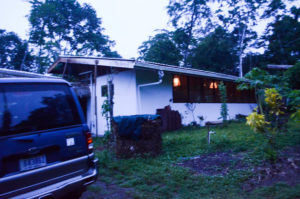
Since then, they have built a kitchen structure up the hill from their house as well as bare bones cabins that interns and students stay at.
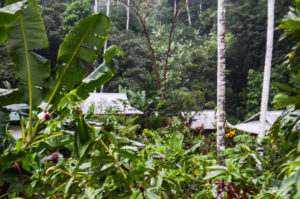
The roofs of the cabins are made of scrap metals, the building posts are made from local trees, and the rest of the makeup of the cabins is made of bamboo. Aside from that, all that is needed for the construction of these structures are a chainsaw, a hammer, nails, and other basic tools.
Animals
Ian quickly dispelled the notion that one needs to consume animals to have a sufficient amount of protein, saying that they have a wide variety of plants that afford them a protein rich diet. However, the farm does have chickens that provide eggs, and they have newly implemented a system involving fish that will soon provide them with fish for meals. There is a pond filled with a native variety of tilapia, and the fish are fed by a contraption that sucks bugs into it and send them directly to the fish.
Crops
Monoculture, or the widespread cultivation of one crop, is a huge problem in Costa Rica. It destroys the soil and is overall not good for the environment. Finca Tierra stays away from this practice and cultivates a wide variety of crops. Ana, Ian, and their son are able to eat an extremely diverse diet from all of the crops grown on the farm. Some of their crops include yams, coconuts, sasha neechi, meringa, katook, hardwood, bamboo, different types of beans, chaya (developed by Mayans, similar to kale and spinach), lettuce, gourds, and tons of fruit trees.
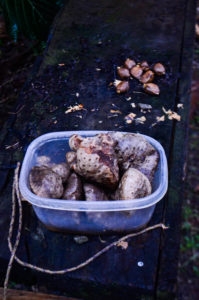
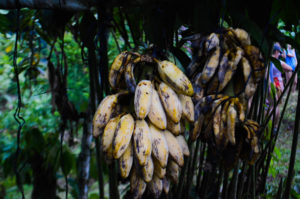
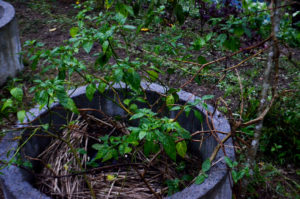
The image above of the green plants in one of the varieties of herbs that they grow near the kitchen to flavor their food. We were able to try fresh lettuce straight from the ground and eat snacks that were made solely from crops from the farm.

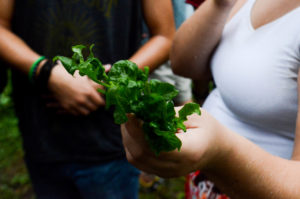
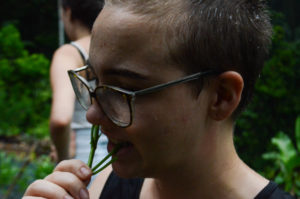
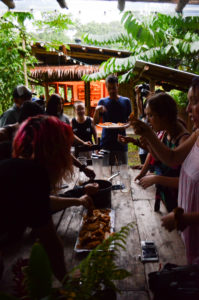
Finca Tierra’s practices are fascinating, and while they may seem extreme to the casual observer, many of the practices are feasible on a small scale. To learn more about Finca Tierra and Ian and Ana, follow them on Instagram at @fincatierra or check out their website https://fincatierra.com/#
